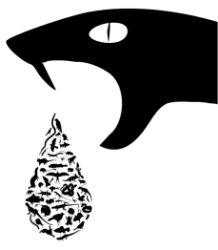-
Courses

Courses
Choosing a course is one of the most important decisions you'll ever make! View our courses and see what our students and lecturers have to say about the courses you are interested in at the links below.
-
University Life

University Life
Each year more than 4,000 choose University of Galway as their University of choice. Find out what life at University of Galway is all about here.
-
About University of Galway

About University of Galway
Since 1845, University of Galway has been sharing the highest quality teaching and research with Ireland and the world. Find out what makes our University so special – from our distinguished history to the latest news and campus developments.
-
Colleges & Schools

Colleges & Schools
University of Galway has earned international recognition as a research-led university with a commitment to top quality teaching across a range of key areas of expertise.
-
Research & Innovation

Research & Innovation
University of Galway’s vibrant research community take on some of the most pressing challenges of our times.
-
Business & Industry

Guiding Breakthrough Research at University of Galway
We explore and facilitate commercial opportunities for the research community at University of Galway, as well as facilitating industry partnership.
-
Alumni & Friends

Alumni & Friends
There are 128,000 University of Galway alumni worldwide. Stay connected to your alumni community! Join our social networks and update your details online.
-
Community Engagement

Community Engagement
At University of Galway, we believe that the best learning takes place when you apply what you learn in a real world context. That's why many of our courses include work placements or community projects.
Foraging
 All animals need to eat, but how they do it various widely across the animal kingdom. To understand the general rules underlying the trophic ecology of animals we use two model systems, scavenging and venom.
All animals need to eat, but how they do it various widely across the animal kingdom. To understand the general rules underlying the trophic ecology of animals we use two model systems, scavenging and venom.
Scavenging
Scavenging is a significance source of nutrition for many large endangered predators and an important component of a “health” ecosystem. It is also a useful model of foraging due to its the relatively simple nature. As part of a previous Marie Sklodowska-Curie Actions (MSCA) Independent Fellowship, I have used agent-based modelling approaches to simulate scavenging environments. This approach allows us to test the optimal energetics relating to scavengers with different physiologies operating in different environments. For example, we have previously used this approach to show that T rex would have been a poor scavenger, with theropods between 600kg-1000kg being far more efficient scavengers. Our aim is to apply this approach to identify general rules of scavenging and to explore how scavenging efficiency may change in various habitats facing various anthropogenic threats.
Venom potency
Predator prey interactions are a central trophic link to virtual all ecosystems. However, it is often difficult to quantify the multifaceted nature of predatory traits which makes comparative approaches difficult. Venom offers an excellent model system of predator traits as its ability to kill prey can be quantified. Using this system, we have previously shown that snake venom potency is general evolved to be prey specific. This system is the ideal for testing the drivers of generalism and specialism in predators.















